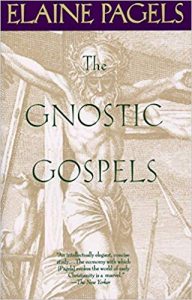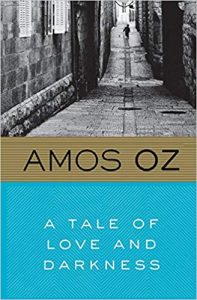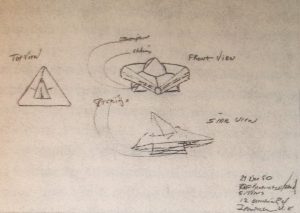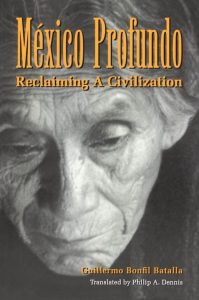The Gnostic Gospels
The Gnostic Gospels, by Eileen Pagels; review by Frank Thomas Smith
In December 1945 an Arab peasant was digging around a massive boulder in Nag Hammadi, Upper Egypt looking for sabakh, a soil for fertilizing crops, when he found an large earthen jar almost a meter high. He hesitated to break it for fear an evil spirit might be inside, but the thought that it could contain gold overcame his fear and he smashed it. Inside were 13 papyrus books bound in leather. Disappointed, he brought them home and dumped them on the floor. His mother subsequently used much of the material for fuel.
How the books came to be recognized is an interesting story in itself, how a local history teacher suspected their value and sent them on to a friend, how they were sold on the black market through antique dealers in Cairo, then confiscated by the Egyptian government, except for one codice, which was smuggled to the United States. Finally, thirty years after their discovery, they were deciphered and eventually published.
Mohammed Alí could not have imagined the enormous implications of his accidental find. If they had been found 1,000 years earlier, the Gnostic texts within would surely have been burned for their heresy. Bishop Irenaeus of Lyon c. 180, wrote five volumes entitled The Destruction and Overthrow of Falsely So-called Knowledge. By the time of the Emperor Constantine’s conversion in the fourth century, possession of books denounced as heretical became a criminal offense. Copies of Gnostic books were confiscated and burned. But someone in Upper Egypt, possibly a monk from the nearby monastery of St. Pachomius, took the banned books and hid them from destruction in the jar where they remained buried for almost 1,600 years. Today we read them differently — as a powerful alternative to orthodox, organized Christianity.
Until then, our knowledge of the early Christian Gnostics had been limited to what their adversaries wrote about them, which has been exclusively negative. In fact, by 300 A.D. both the Gnostics and their writings had been effectively eliminated. Now we have a good idea of what these early Christians thought and why the church found them heretical and dangerous. Elaine Pagels, one of the world’s foremost experts in historical Christianity, has written a non-technical book about these Gospels which is accessible to everyone — a real eye-opener.
The volumes found at Nag Hammadi are in the Coptic language and were written 350-400 A.D. They are, however, translations of earlier Greek documents, which cannot be later that 180 A.D. Gnosis is usually translated as knowledge. But the Greek language differentiates between scientific and reflective knowledge. As the Gnostics used the term, it could be translated as insight, for gnosis involves an intuitive process of knowing oneself. According to the Gnostic teacher Theodosius (c.140-160), the Gnostic is one who understands:
who we were, where we were … whither we are hastening; from what we are being released, and what is rebirth.
The living Jesus of the Gnostic gospels says things which are similar to those related in the four “official” gospels, but with other dimensions of meaning, often reminiscent of Zen koans. From the Gospel of Thomas:
Jesus said, “If you bring forth what is within you, what you bring forth will save you. If you do not bring forth what is within you, what you do not bring forth will destroy you.”
Bound in the same volume with the above is the Gospel of Philip, which attributes to Jesus sayings quite different from those in the New Testament:
… the companion of the Savior is Mary Magdalene. But Christ loved her more than all the disciples and used to kiss her often on the mouth. The rest of the disciples were offended … they said to him, “Why do you love her more than all of us?” The Savior answered and said to them, “Why do I not love you as I love her?”
Other sayings in this volume describe common Christian beliefs, such as the virgin birth or the bodily resurrection as naive misunderstandings. Also bound together with these volumes is the Apocryphon (secret book) of John, which offers to reveal “the mysteries and the things hidden in silence” which Jesus taught to his disciple John.
The living Jesus of these texts speaks of illusion and enlightenment instead of sin and repentance as does the Jesus of the New Testament. Instead of coming to save us from sin, he comes as a guide who provides access to spiritual understanding. The similarity to certain Buddhist teachings is obvious and it is not impossible that these exerted influence on Gnostic thinking, as Buddhist missionaries had been proselytizing in Alexandria for generations when Gnosticism flourished.
The Resurrection
One of the main points of diversion between orthodox catholic and Gnostic thinking involved Jesus’ resurrection. Tertullian, a brilliant writer (c. A.D. 190) violently opposed to Gnosticism, wrote:
What is raised is “this flesh, suffused with blood, built up with bones, interwoven with nerves, entwined with veins, a flesh which … was born, and … dies, undoubtedly human.” He declares that anyone who denies the resurrection of the flesh is a heretic.
Gnostic Christians interpreted the resurrection differently. Some said that the person who experiences the risen Christ does not meet him physically raised back to life; rather, he encounters him on a spiritual level. This seems to be verified even in the New Testament gospels. When the resurrected Jesus appears to the apostles, they don’t even recognize him at first. And Mary Magdalene, when the risen Christ appears to her near his tomb, thinks he is the gardener, and when she does recognize him he tells her not to touch him. Even Paul, in his illumination on the road to Damascus, sees a “light from heaven” and only hears Jesus’ voice. Paul describes the resurrection as a “mystery”, the transformation from physical to spiritual existence. Yet the church condemned all such interpretations.
Gnostics were more interested in the possibility of meeting the risen Christ in the present than the past events attributed to the historical Jesus. A passage in the Gospel of Mary illustrates this:
Now when he rose early on the first day of the week, he appeared first to Mary Magdalene … She went and told those who had been with him, as they mourned and wept. But when they heard that he was alive and had been seen by her, they would not believe it.
Peter especially doubts.
Mary wept and said to Peter: ” … Do you think I am lying about the savior?” Levi said to Peter, “Peter, you have always been hot-tempered … if the savior made her worthy, who are you to reject her?”
Peter, apparently representing the orthodox position, looks to past events, suspicious of those who ‘see the Lord’ in visions, Mary, representing the Gnostic, claims to experience his continuing presence.
This had political connotations, for the church based its authority on the succession from “the twelve” (after Judas was replaced), whereas Mary Magdalene, though not one of the twelve, is shown by the Gnostics to be at least equal to them. Furthermore , while the church relied on Jesus’ public teaching, the Gnostics claimed to be in possession of Jesus’ secret teaching about the “mysteries”. Valentinus, one of the leading Gnostics, argued that only one’s own experience offers the ultimate truth, taking precedence over second-hand testimony and tradition. Therefore, the structure of authority can never be fixed in an institution; it must remain spontaneous, charismatic, and open. Gnostic teaching was obviously subversive of a hierarchic order. It claimed to offer every initiate direct access to God, an access of which the priests and bishops themselves might be ignorant.
Within 170 years after Jesus’ death, the church had developed into a three-tiered organization of bishops, priests and deacons with authority over the laity. This authority was based on two sayings in the New Testament: the giving of the “keys of the kingdom” to Peter as founder of the church, and the claim that Peter was the first to witness the risen Christ; this despite the fact that both Mark and John state that Mary Magdalene was the first to see him. They claimed that Christ, who had authority over heaven and earth, gave temporal authority to “the eleven” disciples, especially Peter, as their spokesman. The Gnostics denied the church’s authority and its interpretation of events, so it was felt necessary to silence them. More »






